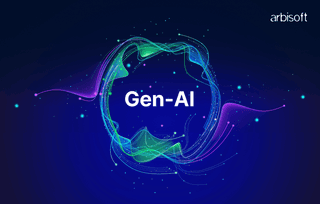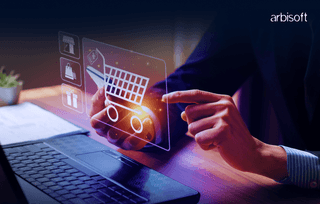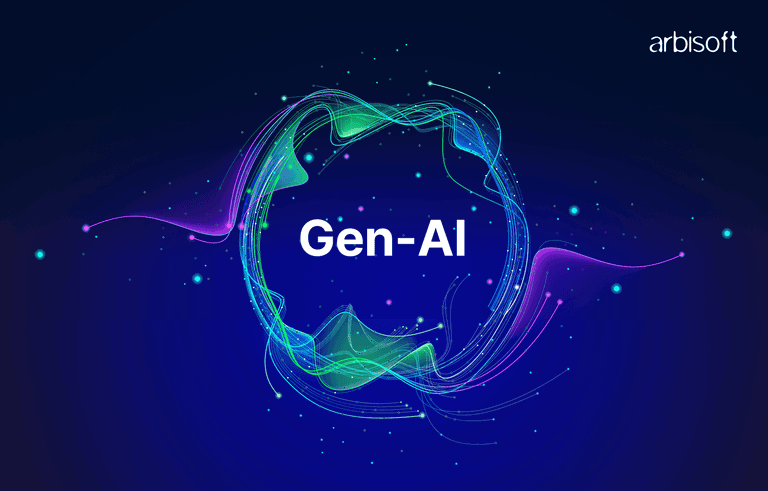We put excellence, value and quality above all - and it shows




A Technology Partnership That Goes Beyond Code

“Arbisoft has been my most trusted technology partner for now over 15 years. Arbisoft has very unique methods of recruiting and training, and the results demonstrate that. They have great teams, great positive attitudes and great communication.”
Snowflake Summit 2025 Highlights: What You Need to Know

In the first week of June 2025, thousands of data professionals, developers, and business leaders gathered at the Moscone Center in San Francisco for Snowflake Summit 2025. The event featured over 500 sessions, workshops, and announcements, showing how fast data and AI are coming together. Snowflake shared its vision for the future, introduced powerful new features, and made it clear that it wants to be the main platform for building smart, data-driven applications.
Let’s take a closer look at what happened and why it matters.
AI Takes Center Stage: Opening Keynote Highlights
The summit began with a keynote from Snowflake CEO Sridhar Ramaswamy, joined by OpenAI CEO Sam Altman. Their conversation focused on the growing role of artificial intelligence in business and daily life.
Altman compared today’s AI models to junior employees, capable but still learning. He said that as AI gets better, it will take on bigger jobs and help people work faster and more accurately. Ramaswamy stressed that this progress depends on one thing: good data. Snowflake’s message was clear, without trusted and well-managed data, AI cannot deliver real value.
This set the tone for the whole event: a future where AI and data work together on a connected, secure, and developer-friendly platform.
What’s New in the Snowflake Platform
After the keynote, Snowflake introduced several important updates to its platform. Instead of just adding random features, these updates all aim to make working with data and AI faster, easier, and cheaper.
Before we get into the technical details, here are the key announcements:
Snowflake Introduces Adaptive Compute
Managing computing resources has always been hard, especially as workloads grow. With Adaptive Compute, Snowflake now handles this automatically. It adjusts computing power up or down based on what the task needs. This means faster work and lower costs, without users having to manage it themselves.
Improved Security with Passkey Authentication
To enhance login security, Snowflake is introducing passkey authentication and dark web monitoring. Additionally, single-factor password authentication will be deprecated by November 2025. This new way goes beyond passwords and lets users log in with fingerprints or face ID. It also includes dark web monitoring, so if a user’s credentials appear online, Snowflake acts quickly to protect the account.
Custom Offers on Snowflake Marketplace
Snowflake’s Marketplace has become a hub for data, tools, and applications. Users can now negotiate custom offers directly with data and app providers. This makes it easier for teams to find exactly what they need, with terms and prices that suit them.
These updates show that Snowflake cares about the whole data experience, from speed and security to flexibility and cost.
Expanding Capabilities: The Crunchy Data Acquisition
One of the biggest announcements was Snowflake’s purchase of Crunchy Data, a company well known for supporting PostgreSQL, a popular open-source database.
This means Snowflake users will soon be able to run PostgreSQL-compatible workloads right inside the Snowflake platform. This is important for developers who already use PostgreSQL and want to scale their apps without moving data between systems.
Snowflake plans to launch Snowflake Postgres, a managed service that combines PostgreSQL’s familiar tools with Snowflake’s performance, security, and governance. This gives teams more ways to build and run data apps, especially those using AI.
New Tools for Developers and Data Teams
Along with platform updates, Snowflake introduced many new tools to help developers build, deploy, and manage data and AI applications more easily inside Snowflake.
Here’s how Snowflake is helping developers do more with less:
Cortex AI: Simpler Access to Insights
Under the Cortex AI suite, Snowflake added two helpful features:
- Cortex Analyst: Lets users ask questions about structured data using plain language. No SQL or coding needed, just type a question and get a clear answer.
- Cortex Search: Allows users to search across unstructured data like PDFs, documents, or customer chats. It uses AI to understand the meaning behind the words.
These tools make AI-powered insights available to more people, whether they are analysts or product managers.
Snowpark Container Services Now GA on AWS
Snowpark Container Services are now generally available on AWS. This means developers can run full apps, services, or machine learning models directly inside Snowflake using containers. It’s like running a small cloud app inside the data platform, without needing to manage separate infrastructure.
Snowflake Notebooks: For Collaborative Workflows
Snowflake Notebooks, now in public preview, let users write SQL and Python code in the same place. Whether you’re exploring data, training a model, or creating reports, everything stays in one notebook. This makes it easier for data scientists and analysts to work together.
Investing in the Future: Startups and Education
Snowflake also announced two big investments to keep innovation growing on its platform:
$200 Million Snowflake AI Fund
Snowflake started a $200 million fund to invest in early-stage startups building AI apps with its platform. The goal is to help developers create new AI ideas, especially those that rely on clean and well-managed data.
One Million Minds + One Platform Initiative
Snowflake launched an education program called "One Million Minds + One Platform." Backed by $20 million, it plans to train and certify 100,000 people by 2027. This effort aims to close the data skills gap by making learning easier for students, job seekers, and professionals.
What We Learned from Snowflake Summit 2025
Snowflake Summit 2025 showed us that data and AI are now closely linked as one strong system. For businesses, new tools like Adaptive Compute help save money and grow more easily. For data teams, better security like passkeys means keeping data safe is very important. The partnership with OpenAI means AI is becoming a useful and trusted tool for everyday work.
Also, Snowflake’s partnership with the LA28 Olympics shows how data is helping to manage large events more smoothly. By sharing important information quickly with organizers, teams, and broadcasters, Snowflake makes it easier to make better decisions and improve the experience for both athletes and fans. This highlights how data is becoming important not just in business, but in real-life events as well.
Wrapping Up: Why Snowflake Summit 2025 Matters
Snowflake Summit 2025 wasn’t just about showing off new tools. It was about building a platform where data, AI, and applications work together in one place. With features like adaptive compute, PostgreSQL support, Cortex AI, and container services, Snowflake offers something few others do: a single environment where businesses can store, process, analyze, and act on their data using modern AI.
By also investing in developers and education, Snowflake is preparing for a future where AI is part of every product and decision, and where data remains the foundation for success
Not the Only Platform in Town
Despite the overall hype and success of Snowflake Summit 2025, it’s definitely not the only player in the data and AI infrastructure domain. Oracle, Teradata, Databricks, and many others continue to vie for the chance to partner with organizations to build their data and AI applications. In this ever-evolving and fiercely competitive market, Arbisoft offers robust Databricks consulting and migration services that unifies your data estate on Databricks and operationalizes machine learning, streamline data engineering, and deliver governed, real-time insights.
Frequently Asked Questions (FAQs)
1. When and where was Snowflake Summit 2025 held?
Snowflake Summit 2025 took place from June 2 to 5 at the Moscone Center in San Francisco, California.
2. What was the main theme of the Summit?
The Summit focused on "Build the Future of AI and Apps," highlighting how data, artificial intelligence, and applications are coming together to drive innovation and business value.
3. Who were the keynote speakers?
The opening keynote featured Snowflake CEO Sridhar Ramaswamy and OpenAI CEO Sam Altman, discussing the evolving role of AI in business and daily life.
4. What is Snowflake Postgres?
Following the acquisition of Crunchy Data, Snowflake announced plans to integrate PostgreSQL capabilities into its platform through "Snowflake Postgres," enabling users to run PostgreSQL-compatible workloads natively.
5. What is the significance of the LA28 Olympics partnership?
Snowflake announced its role as the official data collaboration provider for the 2028 Olympic and Paralympic Games in Los Angeles, aiming to support data management across various functions for the event.
























